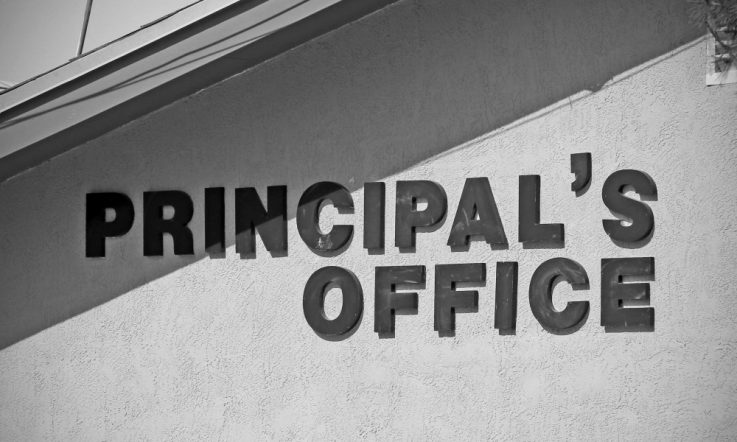Highly effective school leaders continually look for opportunities to improve their own practice, and the quality of teaching and learning in their school. Certified Practising Principal (CPP) is an independent professional certification that recognises accomplished principals. Over the next few months, we'll be talking to leaders involved in CPP about the certification process and the improvement programs that are making a difference in their own school community. In this first article, we speak to Dr Jill de Araugo – Senior Project Director for Principal Certification – about the aims and benefits of CPP.
What is the history of the certification and why was it established?
The CPP award is a formal endorsement that a principal has demonstrated, to a high level, the requirements of the Australian Professional Standard for Principals based on evidence they have generated and presented themselves.
It was developed in 2013–14 by Principals Australia Institute (PAI). There was a prototype (proof of concept) trial in 2015 and a pilot in 2017. National implementation started in 2018 and the first paying candidates will be submitting in April. Last year, the administration of the independent certification was transferred from PAI to the Australian Council for Educational Research (ACER).
There are multiple aims. In the first instance, it was PAI being proactive about the Australian Institute for Teaching and School Leadership's Australian Professional Standard for Principals that was agreed in 2011 – looking at how the Standard could be used to underpin some kind of professional certification which would benefit the system.
There was extensive consultation with the profession to agree definitions and develop design principles – if we had a certification system, what would it need to look like? So, it needed to be fair, inclusive, open to principals regardless of their setting. It needed to: be based on evidence not perceptions, be able to be quality assured, be valid, to be assessed reliably, to have rigour and be credible in the eyes of the public. The certification process needed to involve professional learning, and contribute to leadership formation. A rigorous professional certification system would improve professional practice using an evidence-based approach and help raise the status of the principal profession.
Back in 2013-14 when these consultations were happening, there were lots of baby boomer principals (as there are now) and a recognition that substantial turnover in the principalship was impending. CPP won't be a silver bullet to address principal supply, but in raising the status of the profession it will play a part in increasing the talent pool applies for the roles. There are schools that are hard to staff and where it's difficult to find a principal. Anything that makes the principalship, per se, a more desirable career option will help.
By building and sustaining the leadership expertise of principals and enhancing the attractiveness of school leadership as a career, CPP will lead to improved educational outcomes for children and, at scale, system improvement.
Recognising the expertise of individual principals – raising the status of that individual principal and the profession as a whole. Why would we want to do that? Because we want the principalship to be an attractive career. Why? Because we want better outcomes for our children. Ultimately, it all comes back to: Why are we here? It's about better outcomes for kids.
The moral purpose of CPP, then, is improved school leadership, providing the conditions for improved teaching, which enables improved student outcomes. So it's about making a better Australia.
Who is CPP for and what role have principals played in its design and implementation?
From the outset, it was agreed that the voice of the profession needed to be heard. Research on international practice and assessing complex performance was commissioned, there were two years of consultations and a discussion paper that synthesised the input. [It was agreed] certification would be voluntary; there's a set of design principles; that it's for experienced practising principals – not for aspiring principals, not for a principal the first day on the job. It's recognising accomplished performers. You don't get to be an accomplished performer, generally, until you've got across the basics of being the one sitting in the chair and managing the school. Then you reach a point where you're able to begin shaping the school – that's a big difference.
In 2015 I worked with several teams of principals. The Reference Panel was a governance group, the Change Team worked on advocacy, the Design Team helped develop the assessment framework, and about 50 principals who formed the Trial Team tested aspects of the task in their schools. Principals who were involved with the design came back to be the Assessor Team. Principals who were part of the prototype trial in 2015 were invited to take part in the pilot in 2017. At each point, those principals were asked to give their feedback in order to refine and improve the tools. “Tell us about your experience with these tasks. Do these relate to your work? Did the task make sense? Was the process a useful thing to do? Did you get anything out of it? If so, what did you get out of it?”. All of that feedback we collected along the way gave confidence to proceed from the prototype trial to the pilot, and from the pilot to implementation. In that respect, CPP is of, for and by principals.
What do principals have to do in order to receive certification?
To achieve certification principals are required to demonstrate, with evidence, how their leadership meets the Australian Professional Standard for Principals.
There are three assessment tasks, with clear guidelines in the Candidate Guide and assessment criteria (mapped to the Principal Standard). The candidate reviews their school's Strategic Plan, considers their key issues, and then chooses which two of those three tasks are going to be most useful for them in driving their school's improvement agenda. So the certification process becomes part of their school's best practice.
Broadly, the first task emphasises leading teaching and learning, the second emphasises developing self and others and the third emphasises engaging the wider community. For each task, candidates choose the focus and they choose the scope. So, for example, in the first task it might be Numeracy, it could be Science, Business Studies … and the scope could be 'I'm in a K-12 co-educational school and I've noticed a drop-off in Maths attainment in students going from Year 5 to Year 9 which I want to address.'.
The candidates do a brief proposal in response to a series of questions: What baseline data will you draw from, what's the need? (because if you don't have baseline data how do you know what the need is?), What's your focus? What's your scope? What's the change you want to see? How are you going to go about effecting that change? How are you going to monitor it? What research are you drawing on/have you draw on/has been influential? Are there any issues with permissions? (for example, I have a principal in a Victorian school who has needed permissions from the local Indigenous people). The proposal process and the Candidate Guide provide lots of scaffolding – questions that are prompts – and the assessment criteria themselves.
Candidates have to provide clear, consistent and convincing evidence of their personal leadership, and the impact of that leadership. Change takes time to happen. They've got up to four years to complete, and I think around 18 months is a minimum. Principals shouldn't be rushing to submit – they need to give themselves enough time to produce the clear, consistent, convincing evidence (not some evidence). A principal has to document two portfolio initiatives (the two tasks) and there's also independent data gathered in the form of an anonymous survey to staff, designed specifically for the needs of CPP.
Aside from the certification, what will principals get out of the process?
A much greater clarity on their strategic imperatives and how best to address those, and a lot greater clarity on articulating how they lead and the impact of their leadership. Schools are generating data all the time, what candidates must do is curate that data, select, and then explain 'what story is it telling?'. We want leaders to become very conscious about the way they lead. Why are they doing what they're doing, the way they're doing it? Is it working? How do they know? Schools are really busy places and it's very easy for principals to get drawn into the vortex of management – I'm not suggesting that leaders shouldn't manage as well, but if they only manage then they're actually not leading.
The CPP award is designed in such a way that it can be incorporated into the workload principals already manage in order to turn opportunities for growth into tangible improvements through critical assessment and reflective practice.
Intellectually, CPP is the equivalent of doing a Masters. The principal's job is hard. Certification involves taking that extra step of consciously setting aside time for yourself to think about the job that you're doing; reflecting time; writing time. The benefit of the process comes in that thinking critically about how they're doing their job on the way through, and articulating that. After candidates have been inducted there's a once a month opportunity for them to attend an open mic – to chat, compare notes and get feedback from other people going through the process. That's a really useful learning opportunity. Candidates have to be a self-starter and come to grips with the fact that it's about investing in themselves as a leader.
One of the CPP (a very experienced principal and highly regarded) said she would have been a much better principal now if she'd done this years ago. Another said it's been the most profound professional learning experience he's ever had.
What's next – I understand you're seeking additional input from principals?
We need to create a governing body so we're going to the profession and saying 'give us your advice please'. There are stakeholder meetings around the country in February and March, and principals are invited to come along. ACER has come up with the name the CPP Board, but that has to have Terms of Reference, operating principles and a recruitment process. A discussion paper will frame the conversations.
The stakeholder meetings will take place in: Victoria (Melbourne), 19 February; Tasmania (Hobart), 21 February; Western Australia (Perth), 25 February; South Australia (Adelaide), 26 February; ACT (Canberra), 4 March; New South Wales (Sydney), 5 March; Queensland (Brisbane), 6 March; Northern Territory (Darwin), TBA. There will also be a webinar for regionally-based stakeholders on 14 March. To register to attend, visit Eventbrite.
As a principal, how often do you set aside time for yourself to reflect on your leadership and the impact it’s having?
To find out more about CPP, including costs and eligibility criteria, visit certifiedprincipal.org



